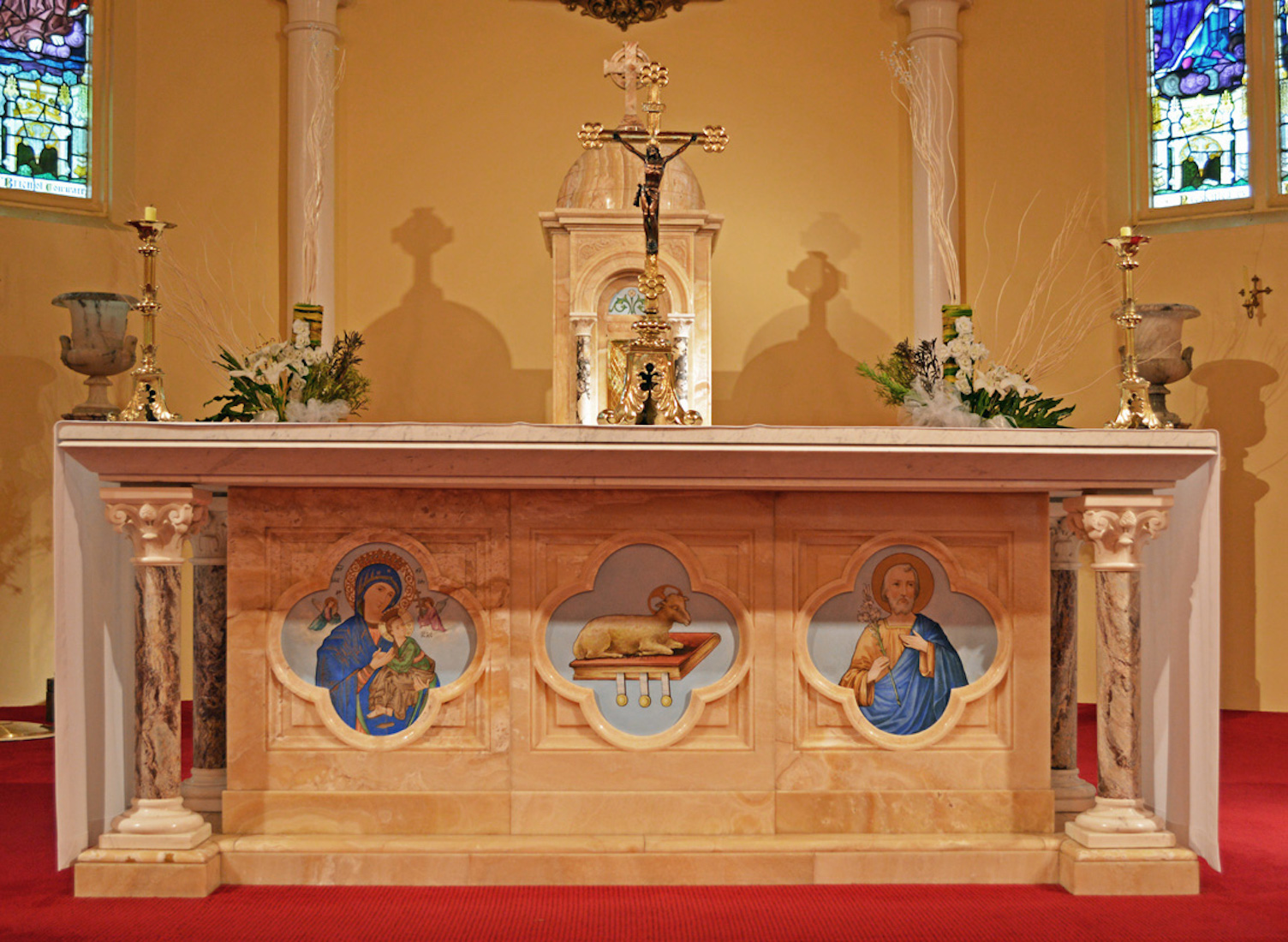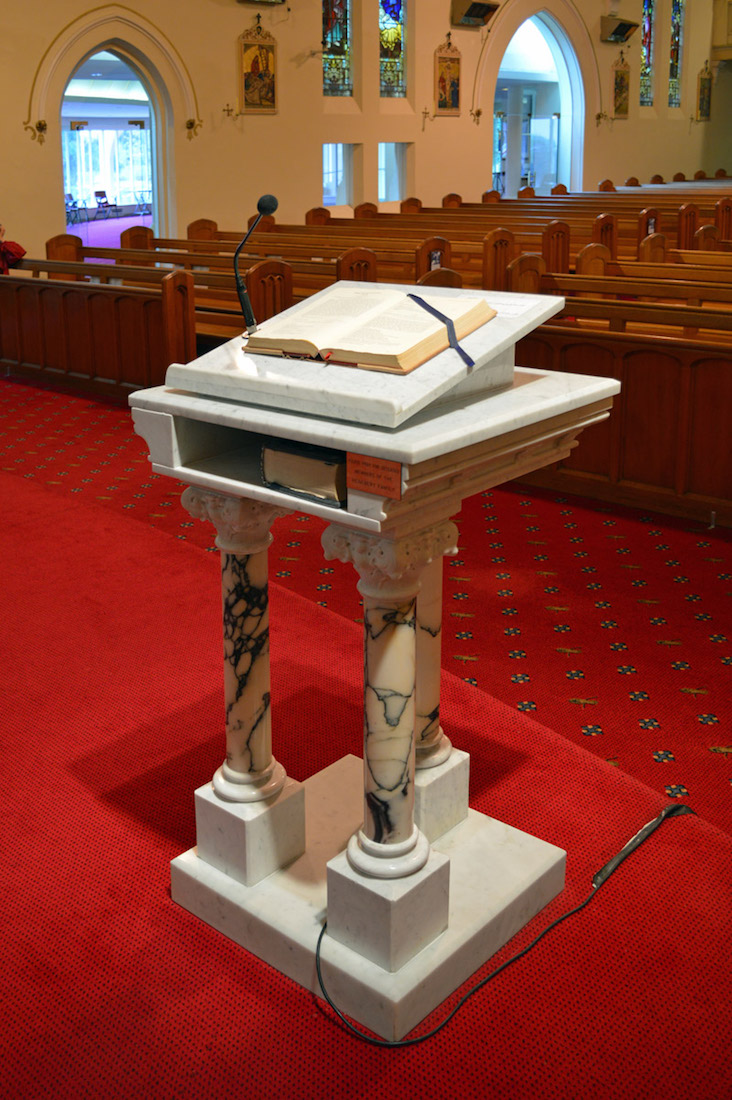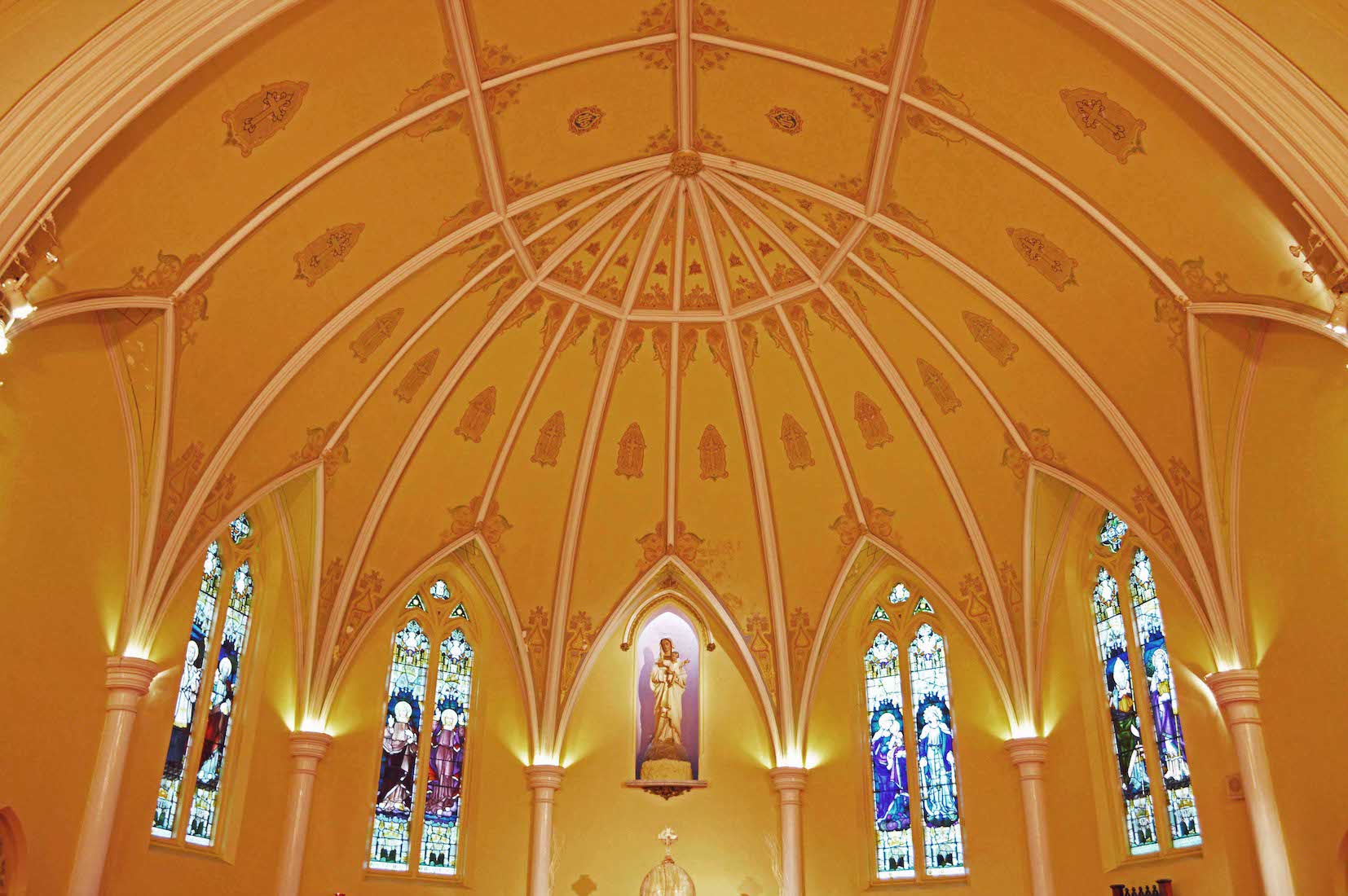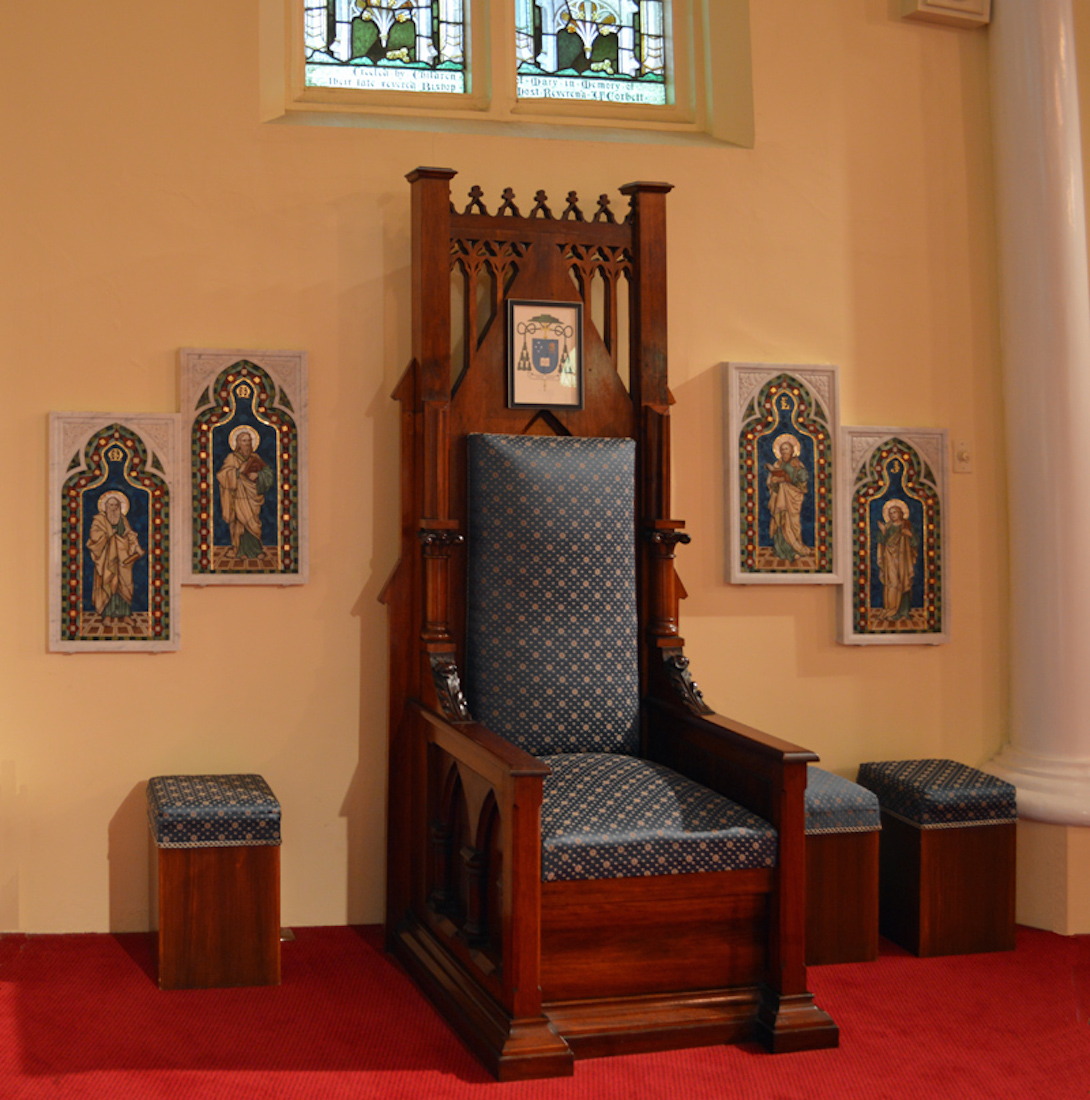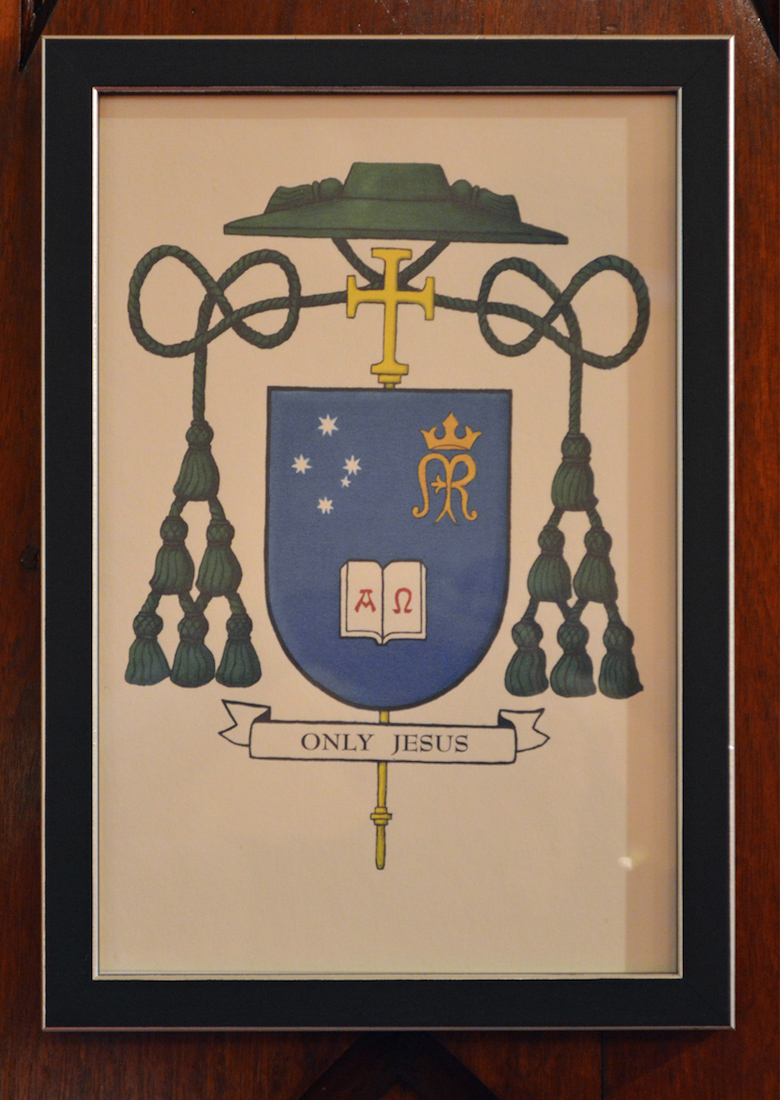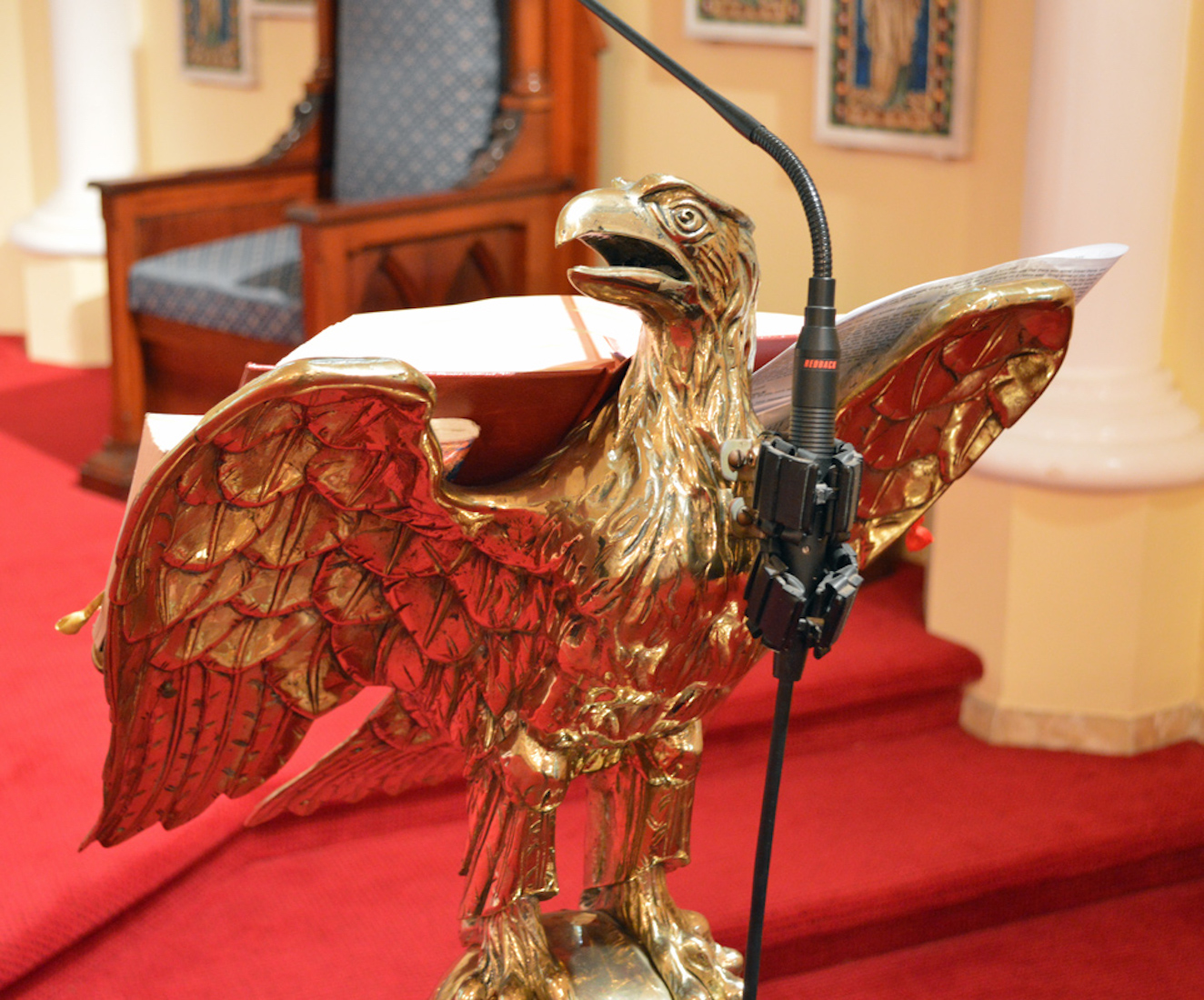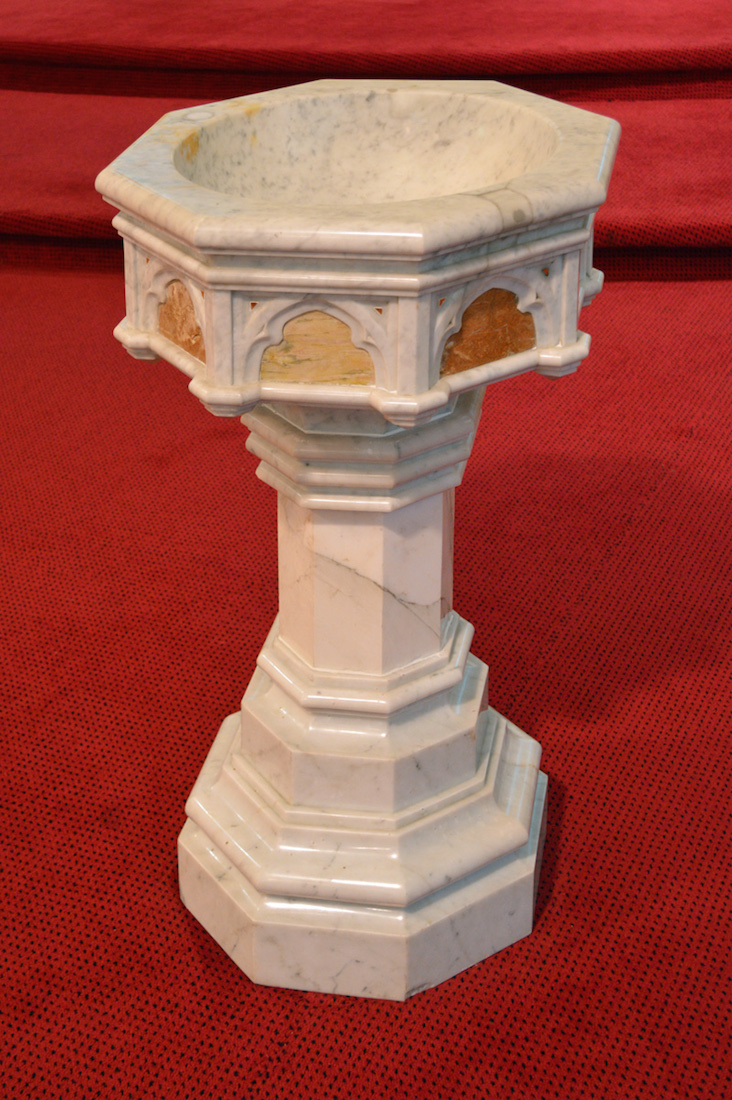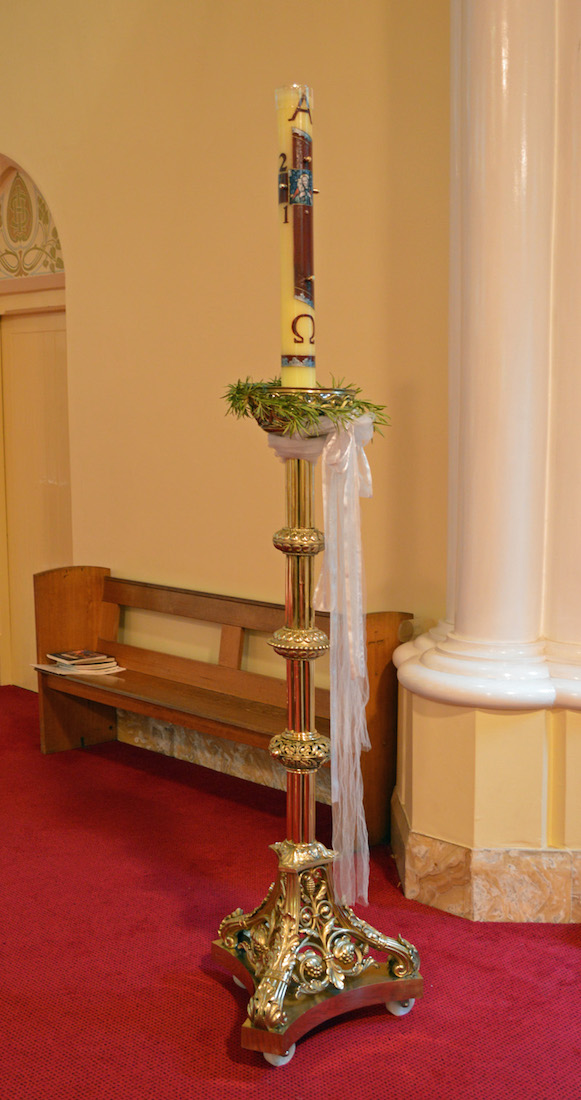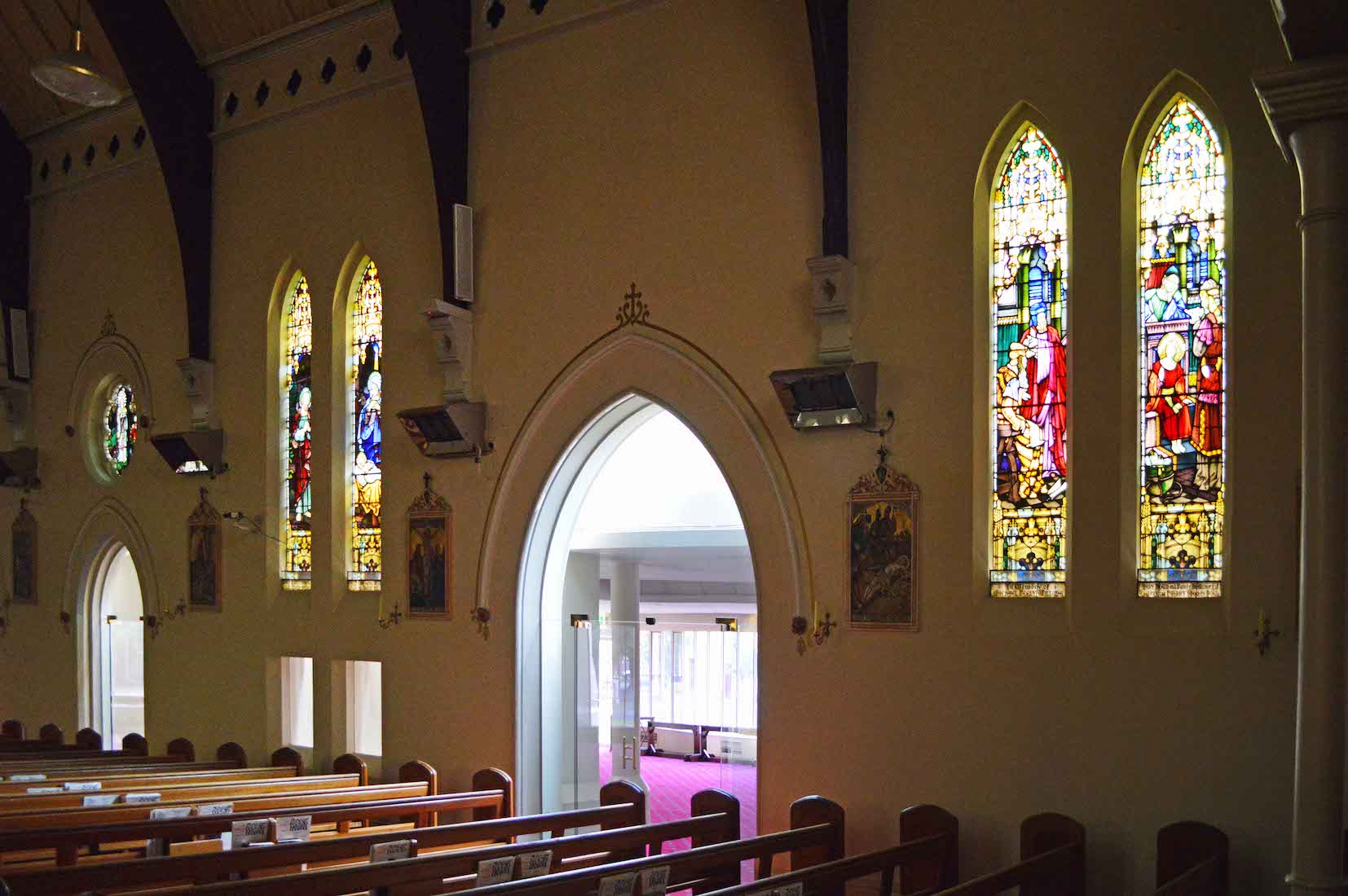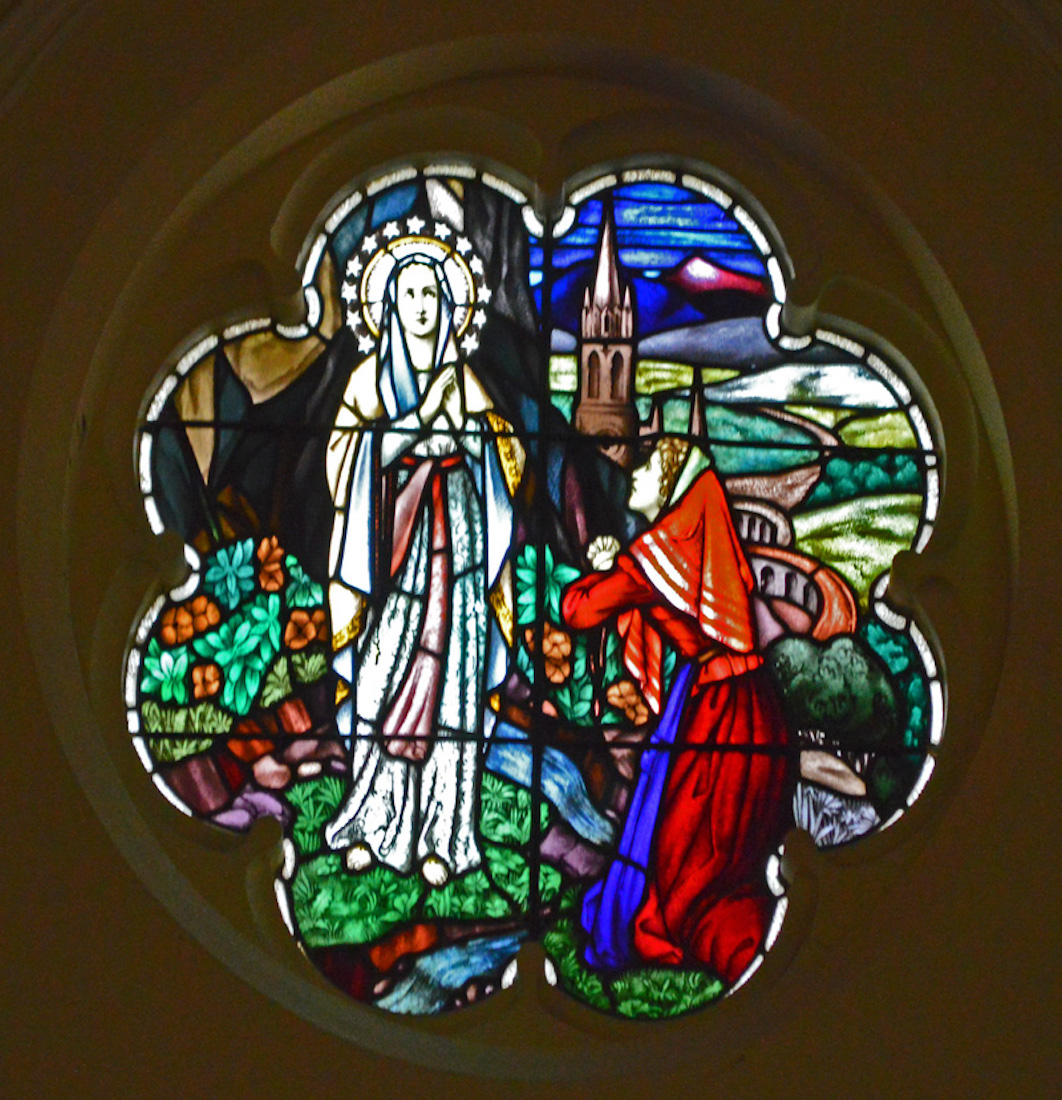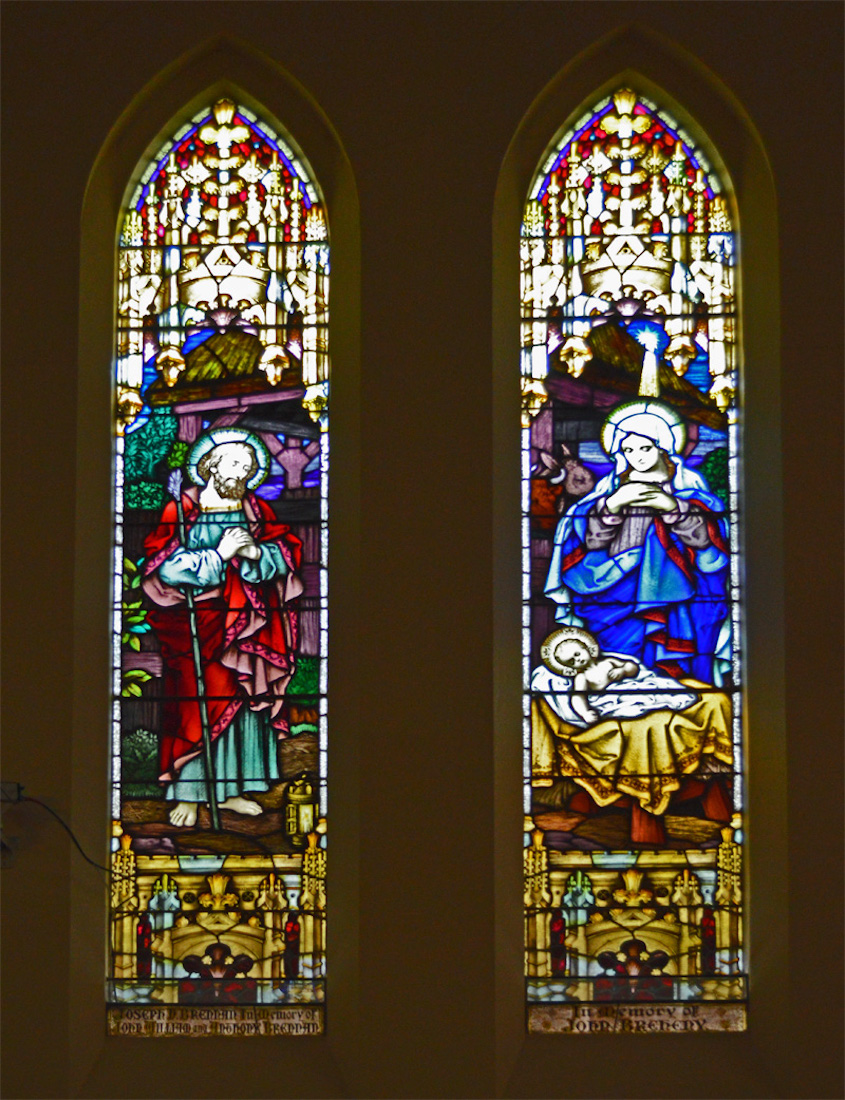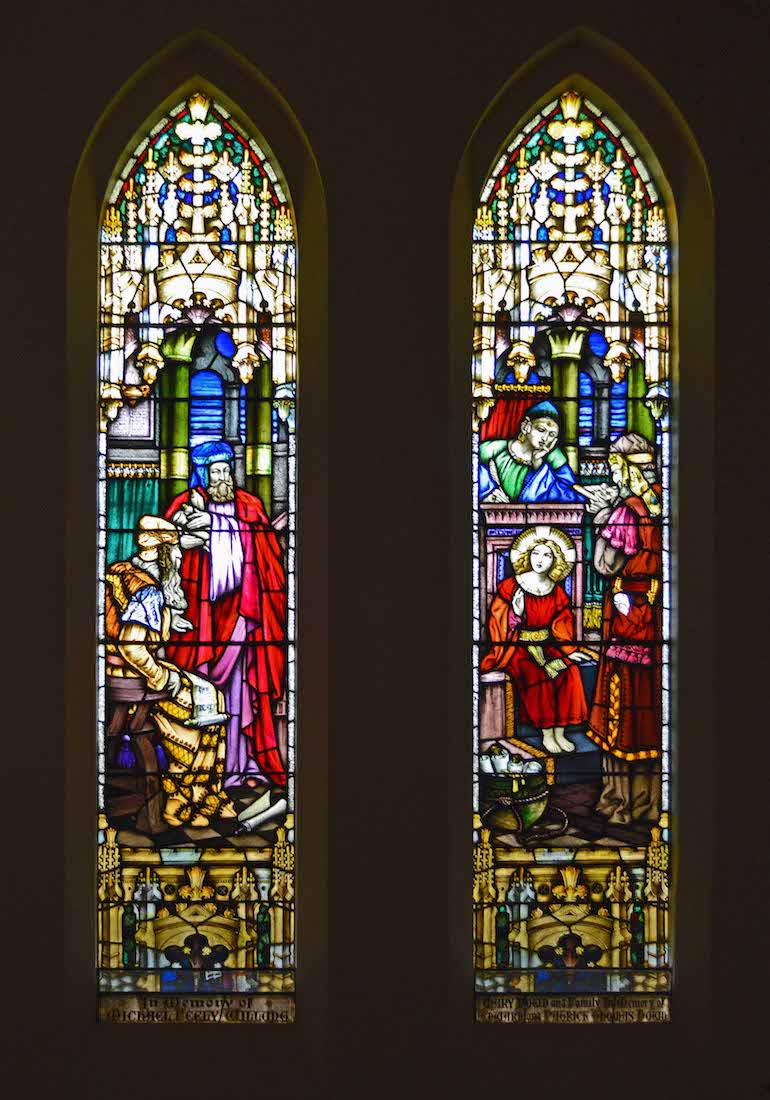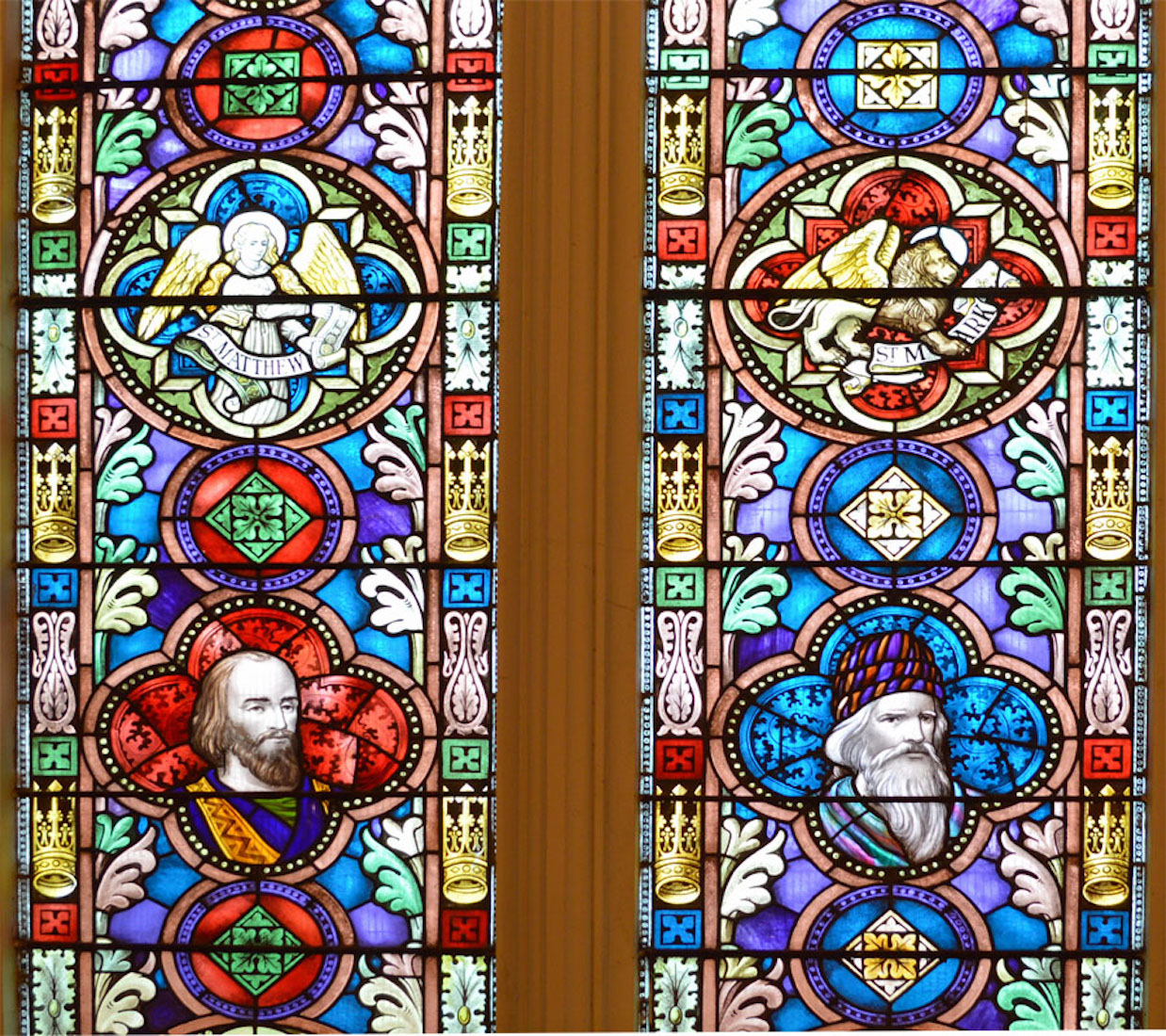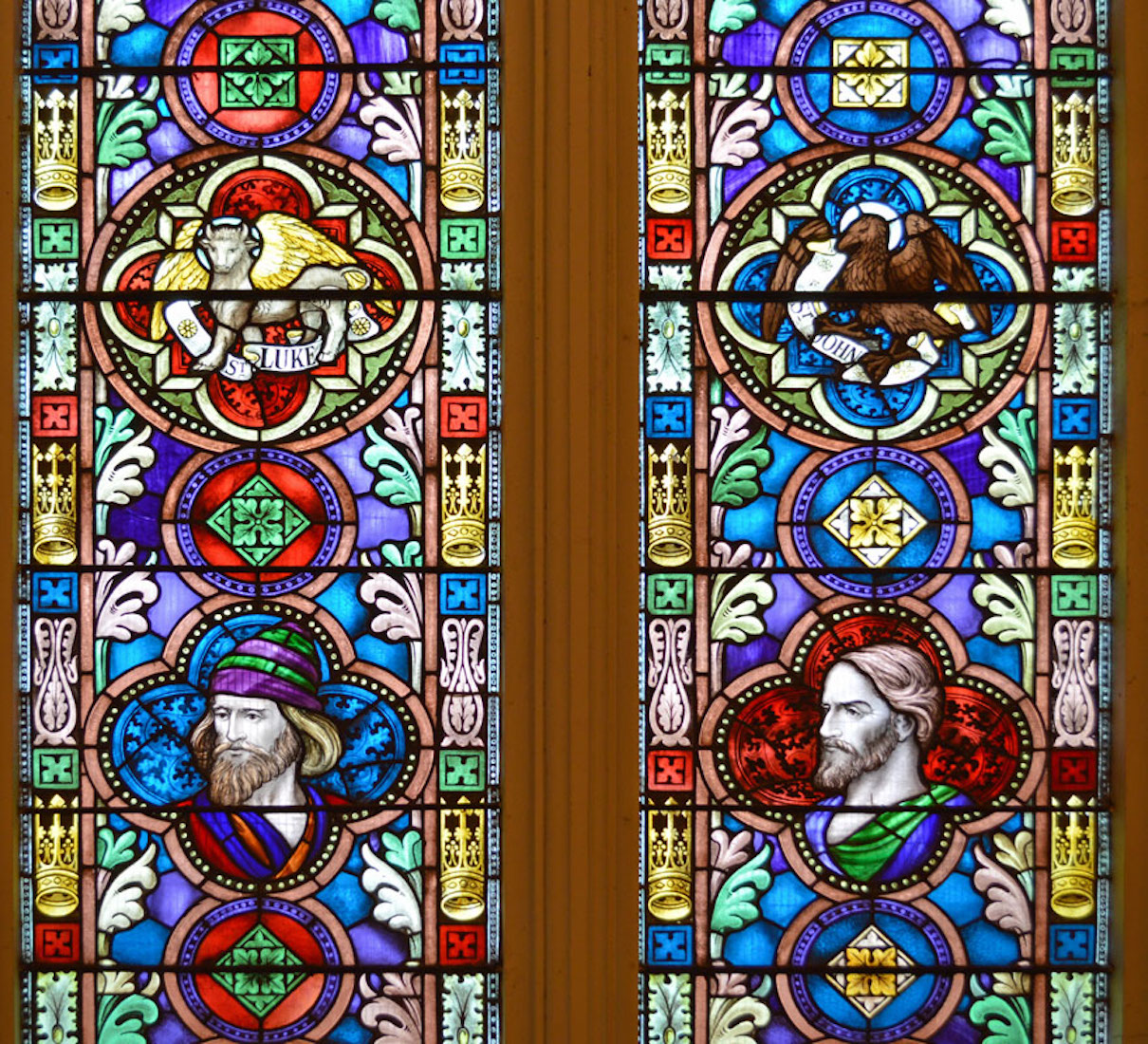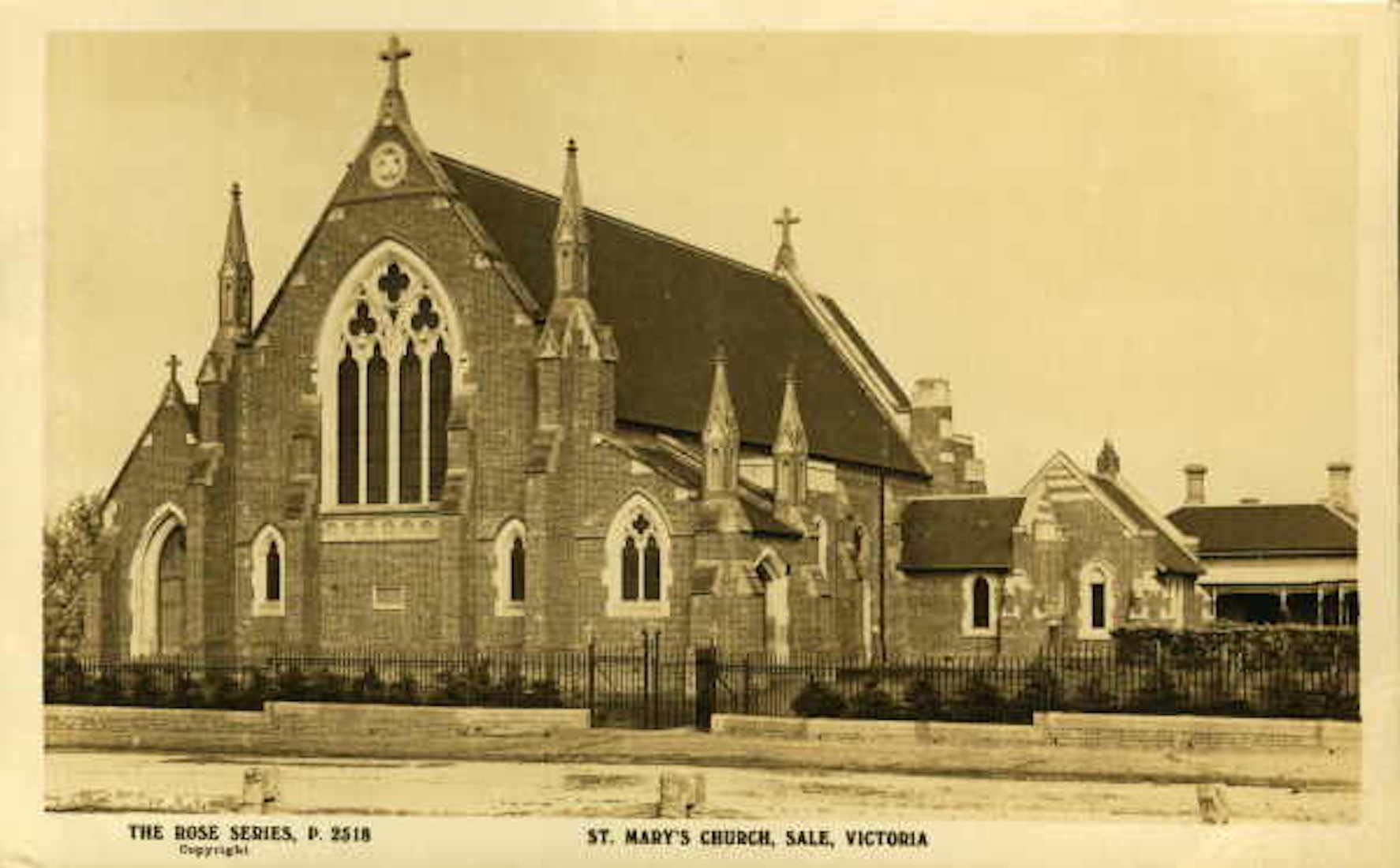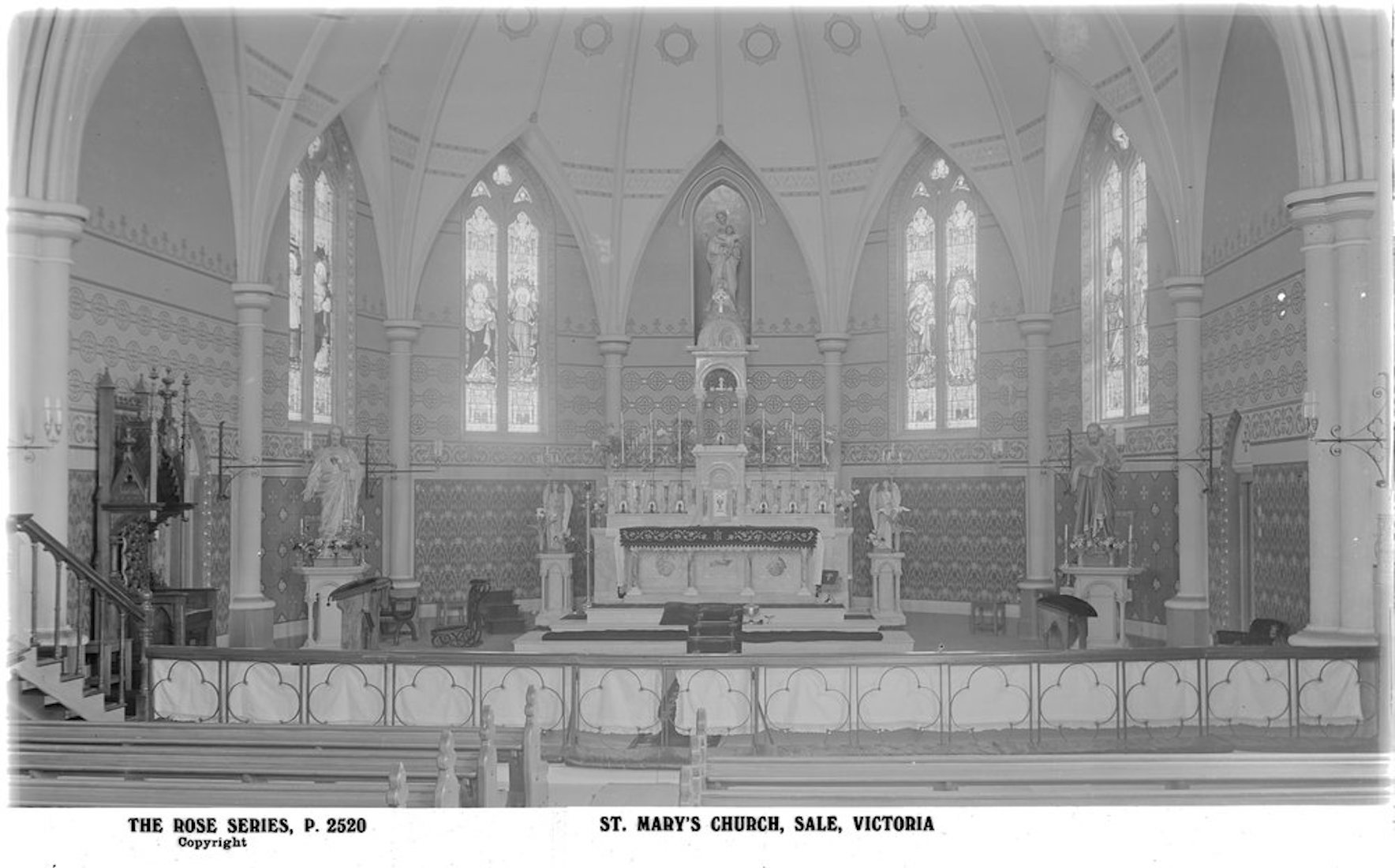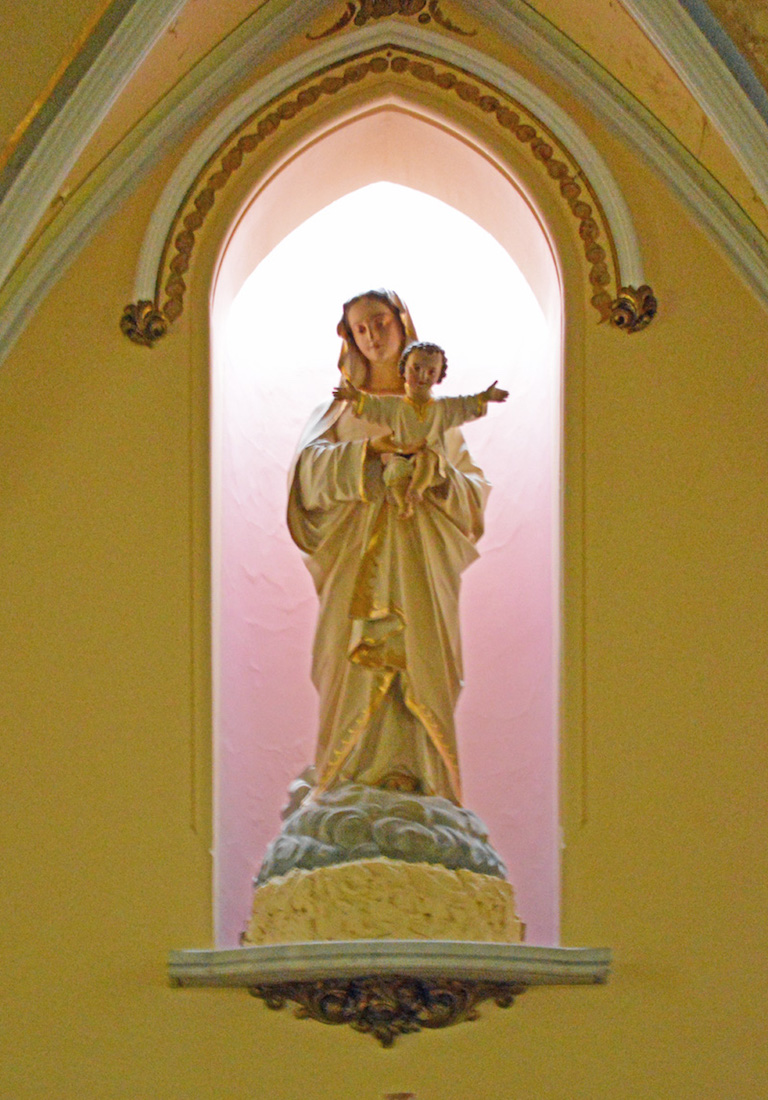
The origin of the Madonna and Child statue in the sanctuary was a matter of conjecture for many years. It now appears that the statue was delivered from Port Albert ca 1866, and ‘was put in a niche in the front wall with a light shining on it’. The infant’s arms are extended in a foreshadowing of the crucifixion, but also in the exultant victory of the resurrection to follow. PLAN
42. SANCTUARY SOUTH WINDOW
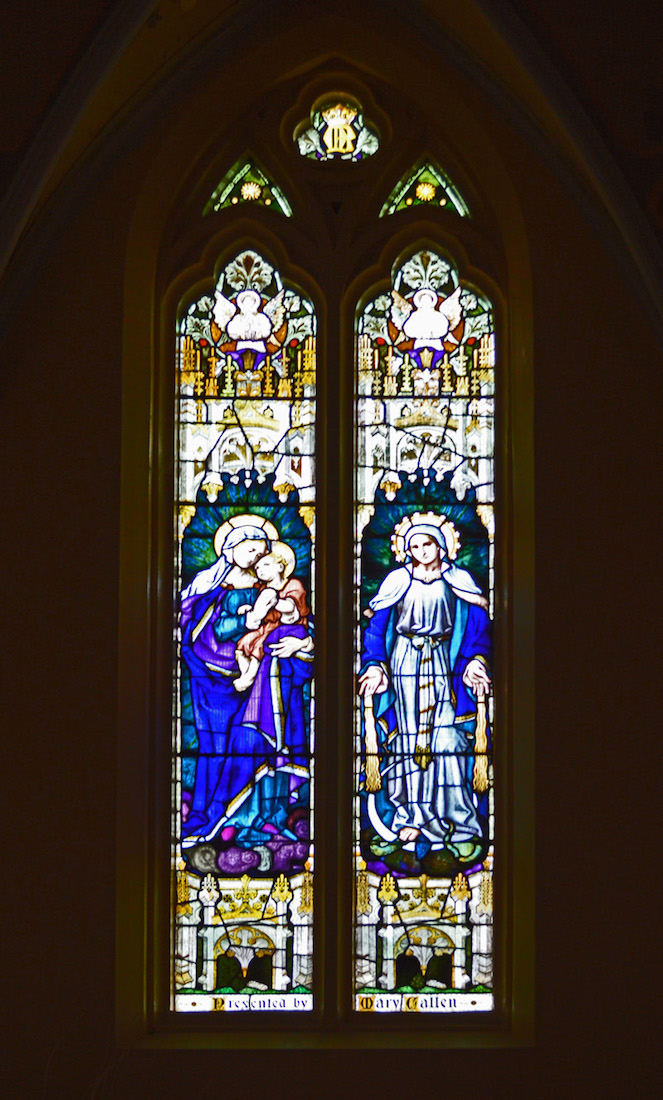
The Southern pair of sanctuary windows were presented by Mary Gallen. The left panel shows the Madonna and Child. The right panel shows Mary alone – apparently having given up her Son for the world.
43. ALTAR
In 1886 a Romanesque onyx high altar purchased from France was installed in the sanctuary. This altar was remodelled ca 1994, incorporating parts of the old high altar. Three panels are displayed on the front of the altar: at left the Madonna and Child, at right Joseph with his characteristic lily branch, and at centre, the sacrificial Lamb of God.
44. TABERNACLE
The word tabernacle means ‘dwelling place.’ The tabernacle is a liturgical furnishing used to house the Eucharist outside of Mass. This provides a location where the Eucharist can be kept for the adoration of the faithful and for later use – for example, distribution to the sick. It also helps prevent the profanation of the Eucharist. Thus the law requires, “The tabernacle in which the Eucharist is regularly reserved is to be immovable, made of solid or opaque material, and locked so that the danger of profanation may be entirely avoided”. In 1993 the Cathedral tabernacle was cut down in size so that it no longer dominated the centrally placed statue of Mary.
45. AMBO
The Bible is supported by a solid marble ambo. The inscription at right reads: ‘Please pray for deceased members of the Henebery Family’. Catholic churches often have an ambo which serves as both pulpit and lectern. We shall discover a brass lectern shortly, so perhaps this is the pulpit?
46. APSE CEILING
The National Trust citation of 1990 says: ‘The Cathedral church built in 1886–87 to the design of Barker and Henderson, is notable for the broad, polygonal plaster-vaulted apse which ... is elaborately painted and decorated.’
47. CATHEDRA
The Bishop’s cathedra has some attractive carving, and carries the crest of the current Bishop. In 1993, the marble tablets of the Gospel writers were relocated to the wall flanking the Bishop’s chair.
48. CREST
The crest belongs to current Bishop Christopher Prowse. The green hat, tassels, and staff with cross are traditional indicators of a bishop. The Southern Cross represents Australia, the M-R insignia stands for Mary Regina, the Bible with Alpha - Omega represents Christ the Word.
49. EAGLE LECTERN
The brass eagle lectern was supplied by T. Gaunt and Co in 1940, and was presented by the Henebery family in memory of their relative Ursula Pasco. The eagle looks particularly fierce!
50. FONT
As part of the extensive improvements to the Cathedral in 1927, a marble baptismal font was added. The font is beautifully polished and has bronze mountings.
51. PASCHAL CANDLE
On the South side of the sanctuary stands the fine brass candle stick. This holds the Paschal or Easter Candle. The candle illustrates that Christ is the Light of the world. It is used around Easter time and on other special occasions.
52. SOUTH NAVE
As we conclude our exploration of St Mary’s Cathedral, we walk back alongside the South wall of the nave. The windows and Stations of the Cross reflect those on the North wall, but here there are several arched through-ways to the assembly area. In particular the South confessional was removed to make way for one of these. We look first at the round window at far left.
53. SOUTH ROUND WINDOW
The round window shows a scene from the life of St Bernadette of Lourdes. In November of 1857 Bernadette was sent to a little village close to Lourdes to work on the farm. However, her desire to receive First Holy Communion brought her back to the village. While out walking Bernadette had removed her socks and shoes to cross the stream when she heard a gust of wind and looking up saw the ‘lady dressed in white with a blue belt and a yellow rose on each foot’. Some of the window colours are not true to the story!
54. SOUTH WINDOW EAST
There are two pairs of stained glass windows in the South wall of the nave. The Eastern pair show the Nativity. At left the Brennan window was given by Joe Brennan in memory of John, William and Anthony Brennan. Anthony Brennan died in 1931 when he was Mayor of Sale. At right is the Breheny window given in remembrance of John Breheny, brewer, and member of a family well known throughout Australia in the brewing industry. Breheny’s Brewery in York Street, Sale, known as the Gippsland Brewery was acquired by the family in 1897. John Breheny died in 1932.
55. SOUTH WINDOW WEST
These windows to the West of the South wall show the young Jesus teaching in the Temple. The windows are given in memory of Michael Feely Williams, and Edward and Patrick Thomas Dowd.
56. WEST WINDOW
The framework of the large window in the West wall dates from the erection of the Church in 1886. The stained glass panels are of a rather later date, and represent the Four Evangelists. From left, the St Matthew window is in memory of Bernard Lazzaro and family. The St Mark window memorializes the Wray family. The St Luke window was presented by the Miller brothers in memory of their father. The St John window was gifted in memory of Maurice Allman. The dedications are inscribed in curved arches at the tops of the windows.
57. MATTHEW, MARK
This is a close-up of a portion of the St Matthew and St Mark windows. Above the picture of the Evangelist is the traditional sign. In the case of St Matthew, a figure of an angel, in the case of St Mark, a lion. These signs are taken from Rev 4:7 which describes the four living creatures surrounding God’s throne.
58. LUKE, JOHN
In the right hand pair of windows we have the image of St Luke, and above this the sign of the ox. Above the picture of St John, the sign is of an eagle.
59. POSTCARD 1909 – 1940
The main part of St Mary’s Cathedral with its distinctive east-facing Gothic windows was constructed in 1886 by pioneer priest Fr James Hegarty. He initiated work on this red brick church when it was rumoured that Sale would become the seat of a Gippsland-based diocese and he wanted to ensure that the town had a church worthy of being called a Cathedral. The first Bishop of Sale, James Corbett brought back from Europe French-made bells for the free-standing belfry in the Cathedral grounds, as well as statues of the Sacred Heart, Our Lady and Stations of the Cross. [Photo Source: slv pc000193.jpg]
60. POSTCARD INTERIOR
This old photograph of the sanctuary shows how many of the original features have been retained. In 1910 the basic rectangular building underwent major extensions which included a sanctuary, bishop’s sacristy, priests’ and altar boys’ sacristy and Our Lady’s chapel. A Romanesque onyx high altar purchased from France was installed in the new sanctuary, which features impressive stained glass windows and a large statue of Mary Help of Christians. A blackwood chair with a carved decorative canopy was obtained and Bishop Corbett donated a polished wooden pulpit. This pulpit was later transferred to St Mary’s Church, in the neighbouring town of Maffra. [Photo Source: slv 0_427925.jpg]


